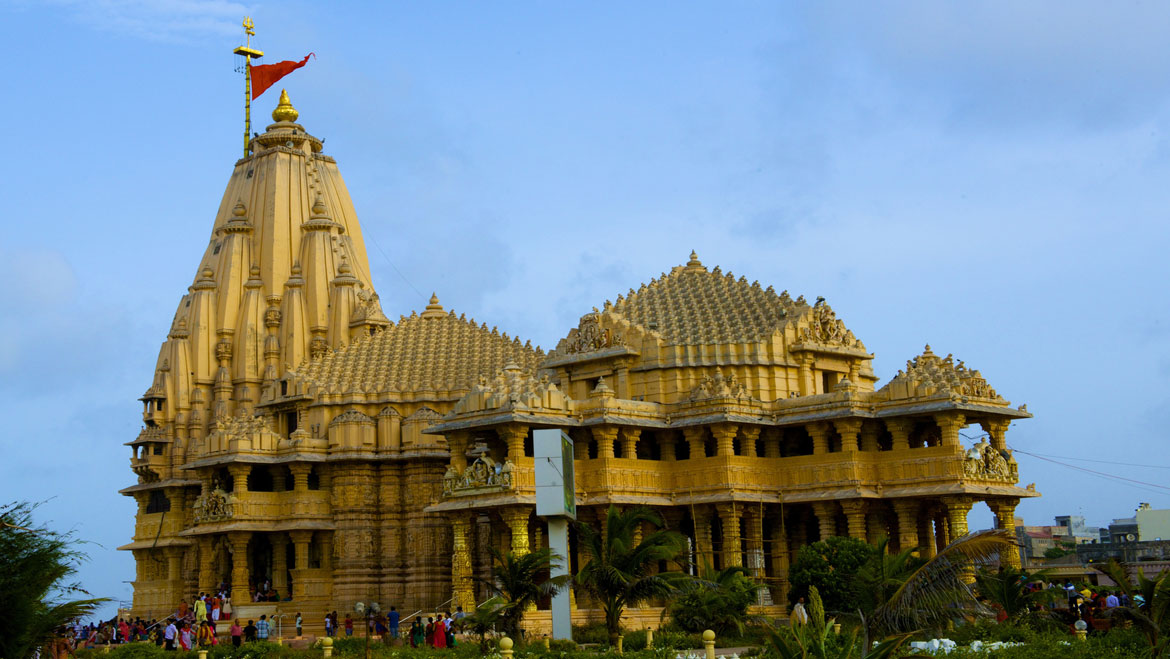Embarking on a pilgrimage to Dwarka and Somnath is not just a journey; it’s a spiritual odyssey that offers a profound connection with India’s rich religious heritage. This guide will provide you with a comprehensive plan for your trip, offering insights into the best time to visit, transportation options, itinerary suggestions, accommodation choices, and essential travel tips to ensure a memorable and hassle-free experience.
Best Time to Visit
To truly appreciate the spiritual ambiance and comfortably explore the historical sites, plan your trip to Dwarka and Somnath during the winter months, from October to February. The weather is pleasantly cool, making it ideal for temple visits and sightseeing. It’s best to avoid the monsoon season (June to September), as heavy rainfall can disrupt travel plans and outdoor activities. The summer months (March to June) can be quite hot, which might make extensive exploration less comfortable.
How to Reach Dwarka and Somnath
Dwarka and Somnath are well-connected by various modes of transportation, making them accessible for pilgrims and travelers from across the country.
- By Air: The nearest airport to Dwarka is Jamnagar Airport, about 130 km away. For Somnath, the closest airport is Diu Airport, approximately 100 km away. From these airports, you can hire taxis or take buses to reach your destination, enjoying scenic views along the way.
- By Train: Dwarka has its railway station, Dwarka Railway Station, which is well-connected to major cities such as Ahmedabad, Mumbai, and Delhi. Similarly, for Somnath, the nearest railway station is Veraval Railway Station, about 7 km away. Both stations offer regular train services, providing a convenient option for pilgrims and travelers.
- By Road: Both Dwarka and Somnath are easily accessible by well-maintained roads. The journey offers picturesque views of Gujarat’s landscapes. State transport buses, private buses, and taxis operate regularly between these destinations and nearby cities like Ahmedabad, Rajkot, and Porbandar, ensuring seamless connectivity.
Suggested Route Map
For those starting their journey from Ahmedabad:
- The route from Ahmedabad to Dwarka passes through Rajkot and Jamnagar, providing a glimpse of vibrant Gujarati culture and scenic landscapes.
- From Dwarka, the journey continues towards Somnath via Porbandar and Veraval, each segment offering historical and cultural landmarks to explore.
Itinerary
Crafting a thoughtful itinerary can help you make the most of your pilgrimage to Dwarka and Somnath:
Day 1: Arrival in Dwarka
- Begin your spiritual journey by visiting the Dwarkadhish Temple, dedicated to Lord Krishna.
- Explore the Rukmini Devi Temple, known for its exquisite architecture and deep spiritual significance.
- Visit the Nageshwar Jyotirlinga Temple, one of the twelve Jyotirlingas dedicated to Lord Shiva.
- Conclude the day by attending the evening Aarti at Dwarkadhish Temple, immersing yourself in the divine atmosphere.
Day 2: Dwarka Sightseeing
- Take a ferry ride to Beyt Dwarka, an island retreat steeped in mythology and tranquility.
- Visit Gomti Ghat and cross the Sudama Setu, both significant for their spiritual and cultural relevance.
- Relax at Dwarka Beach, enjoying the serene coastal views of the Arabian Sea.
Day 3: Journey to Somnath
- Depart from Dwarka and head to Somnath, traversing through the beautiful landscapes of Gujarat.
- Stop at Porbandar, the birthplace of Mahatma Gandhi, and visit the historic Kirti Mandir.
- Upon reaching Somnath, visit the legendary Somnath Temple, known for its stunning architecture and spiritual significance.
- Participate in the evening Aarti at Somnath Temple, experiencing the serene beauty of the rituals against the backdrop of the Arabian Sea.
Day 4: Somnath Exploration
- Visit Bhalka Tirth, the sacred site associated with Lord Krishna’s departure from the mortal world.
- Experience the confluence of three rivers at Triveni Sangam and offer prayers at the peaceful Kamnath Mahadev Temple.
- End your pilgrimage with a visit to Somnath Beach, offering breathtaking views of the Arabian Sea and the temple’s majestic silhouette.
Accommodation Options
Dwarka and Somnath offer a wide range of accommodation options catering to different preferences and budgets. Whether you are looking for spiritual retreats, budget guesthouses, or luxurious resorts, you will find a variety of choices. Consider staying near the temples or along the coastline to enjoy convenience and scenic beauty throughout your stay.
Transportation for Local Sightseeing
Navigating through the sacred sites of Dwarka and Somnath is easy with several local transportation options available:
- Hire auto-rickshaws or taxis for convenient access to temples and other tourist attractions.
- Rent bicycles for an eco-friendly way to explore the scenic vistas at your own pace.
- For longer journeys, consider using state transport buses, private coaches, or app-based cab services, all of which offer comfortable and reliable options for traveling across Gujarat.
Travel Tips
- Plan your pilgrimage during the winter months (October to February) to enjoy pleasant weather and optimal travel conditions.
- Dress modestly when visiting temples and religious sites, respecting local customs and traditions.
- Stay hydrated and carry sun protection, such as sunscreen and hats, to protect yourself from the sun.
- Participate in rituals and ceremonies with respect and mindfulness to fully embrace the spiritual atmosphere.
- Keep a close watch on your belongings, especially in crowded areas, to ensure a safe and enjoyable pilgrimage experience.
Conclusion
A pilgrimage to Dwarka and Somnath is a transformative journey that transcends ordinary travel. It is an experience filled with devotion, spirituality, and cultural immersion. By following this comprehensive guide, you can plan your trip effectively, ensuring a seamless and enriching pilgrimage through the heartland of Gujarat’s religious heritage.






